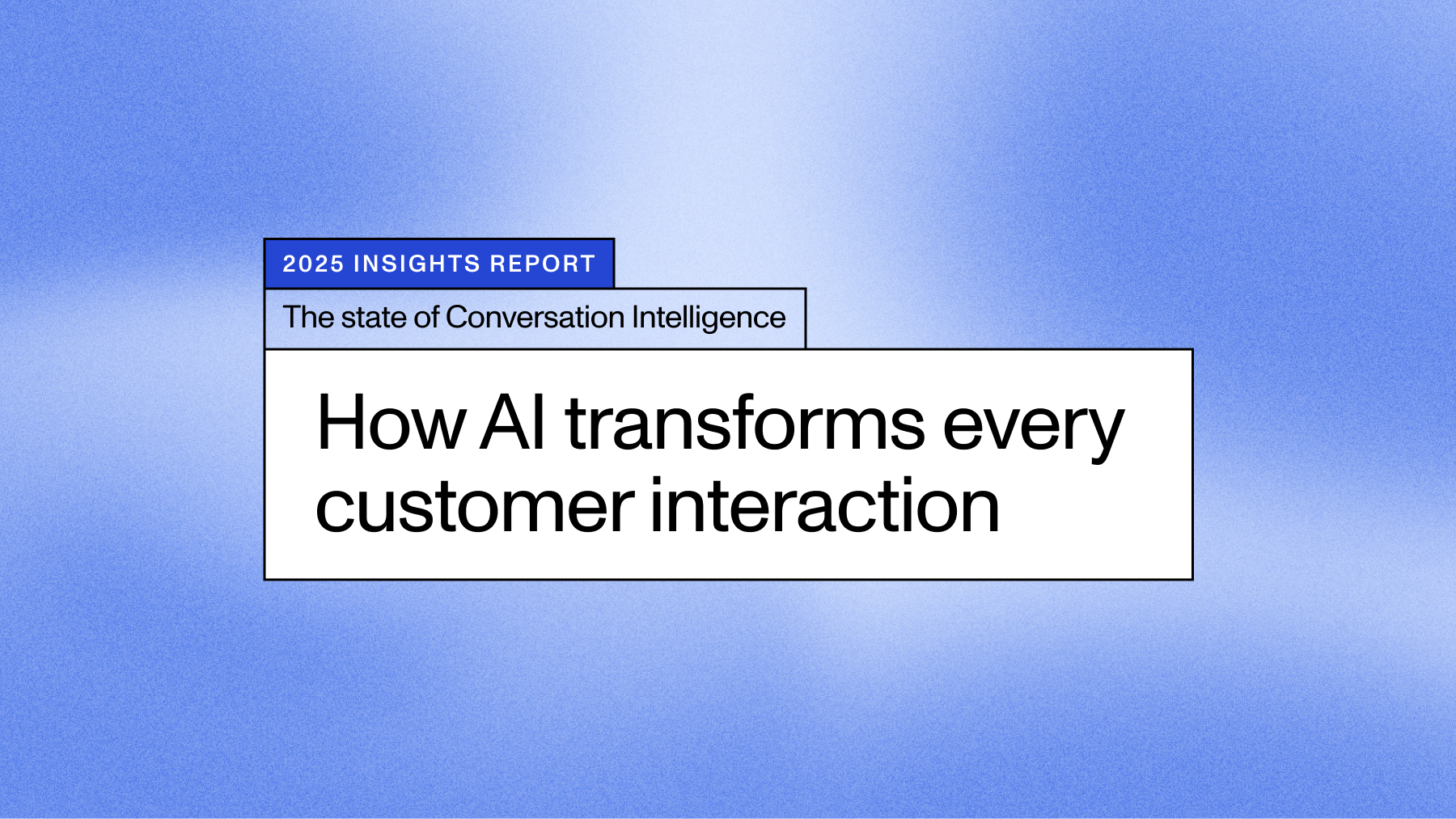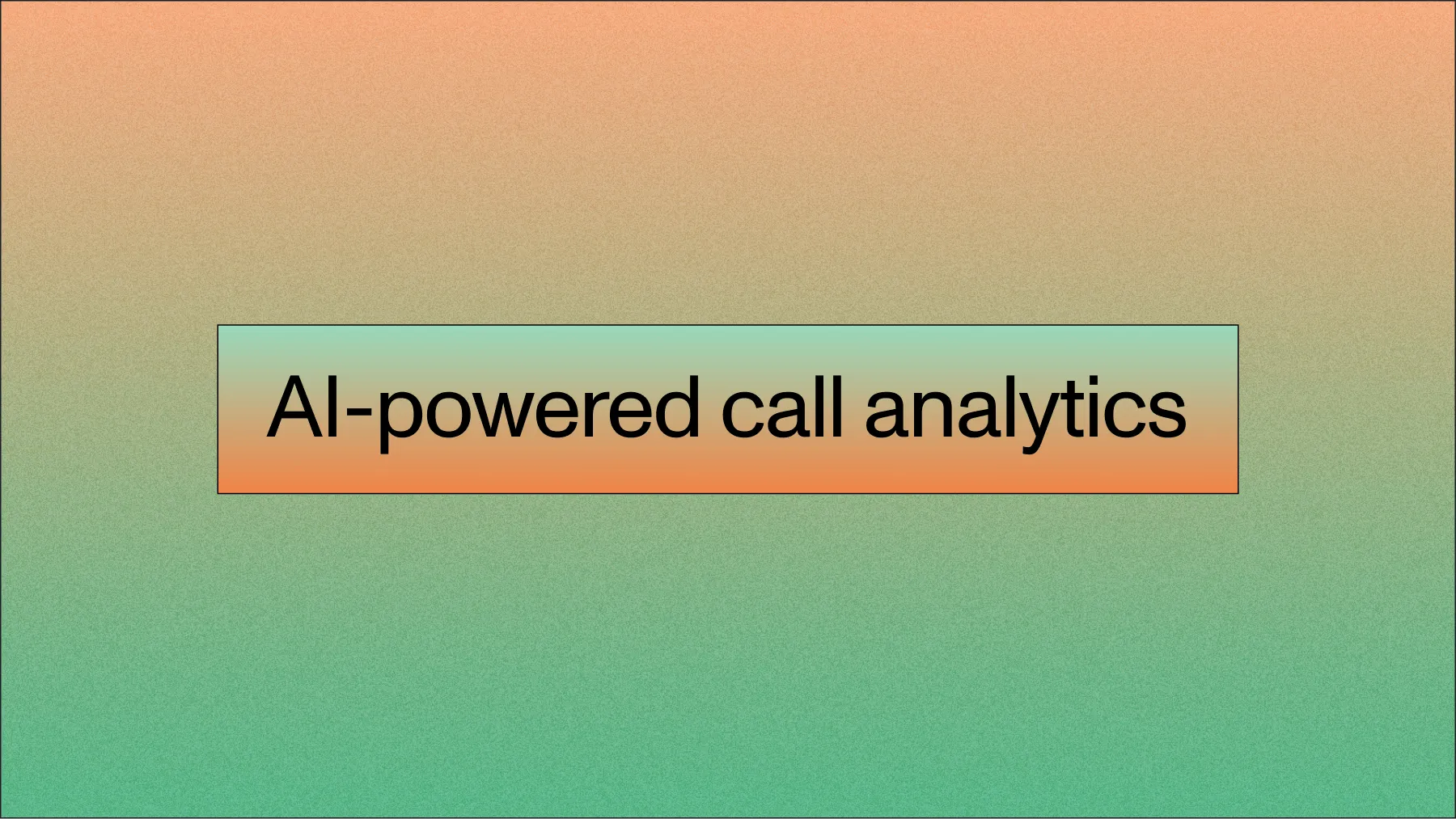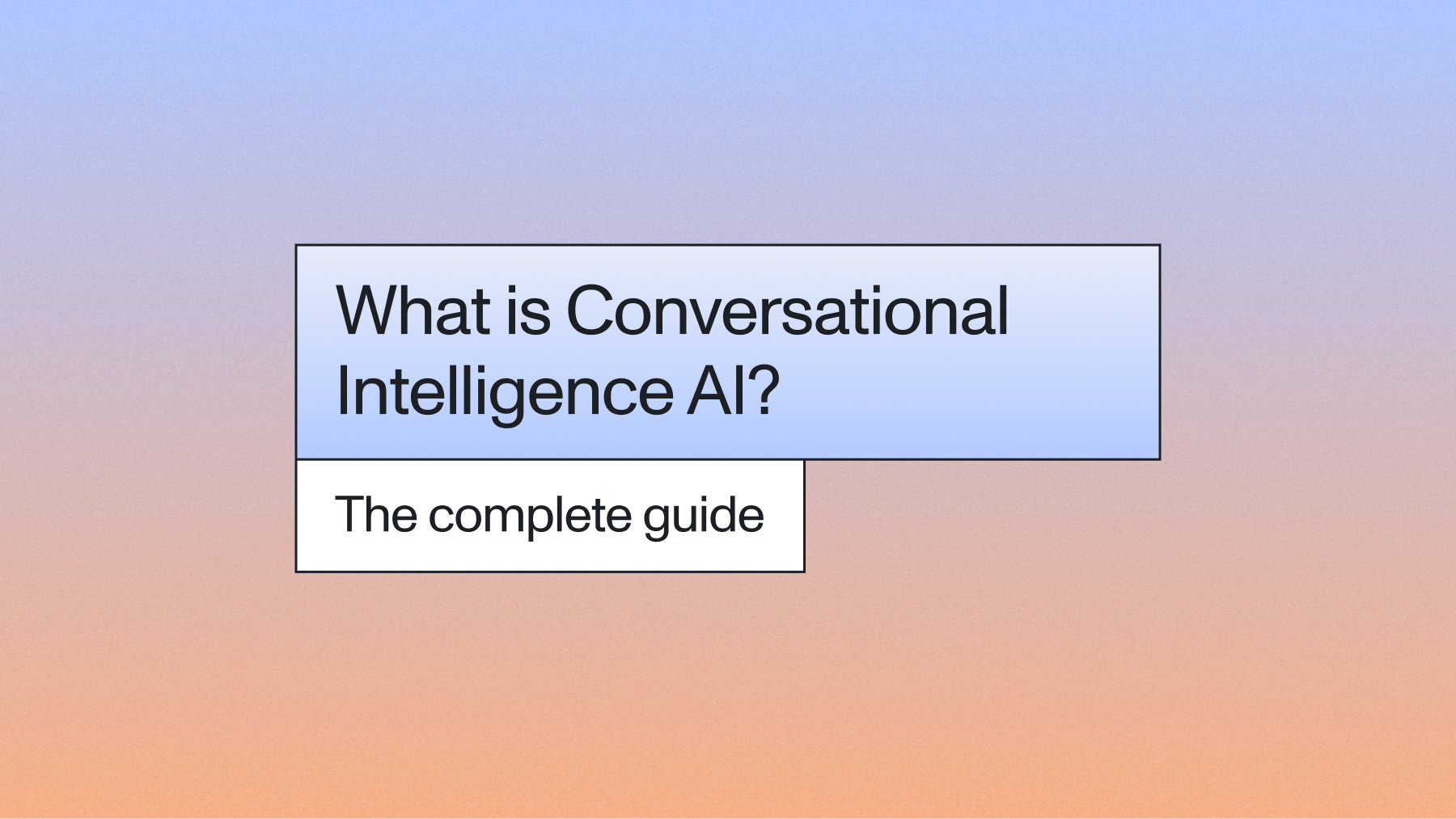The conversation intelligence value machine: How AI transforms every customer interaction
Discover how conversation intelligence transforms customer interactions across every business function.



Three years ago, conversation intelligence was a nice-to-have sales tool. Today, it's the fastest-growing category in contact center AI, with the conversation intelligence software market projected to reach $80.12 billion by 2034. What changed?
The answer isn't just technological advancement—it's business transformation. Conversation intelligence has evolved from a simple transcription service into what we call a "value machine": a cross-functional powerhouse that drives measurable improvements across every customer-facing team.
Current conversation intelligence use cases: Beyond transcription
Modern conversation intelligence platforms handle four core capabilities that work together to transform how businesses understand their customers:
Speech-to-text transcription forms the foundation. Highly accurate asynchronous speech-to-text transcription has long formed the foundation of conversation intelligence tools, as phone calls and virtual meetings have to be turned into tangible transcripts before analysis can occur. Now, according to AssemblyAI's 2025 State of Conversation Intelligence Report, more than 80% of respondents predict that real-time conversation intelligence will be the most transformative market capability in 2025 and beyond.
Call summarization eliminates the manual documentation that typically consumes 20-30% of agent time. Instead of agents spending hours writing up call notes, AI automatically generates structured summaries highlighting key decisions, next steps, and customer sentiment.
Agent coaching moves beyond random call sampling to data-driven improvement. Systems analyze conversation patterns to identify what top performers do differently, then provide real-time guidance to help other agents replicate winning behaviors. Companies like Jiminny report that their customers see 15% higher win rates when using conversation insights powered by our platform.
Sentiment and keyword analysis surfaces emotional signals and emerging trends across thousands of interactions. Rather than waiting for quarterly surveys, teams spot customer frustration, competitive threats, and product opportunities as they emerge from actual conversations.
Why conversation intelligence is a value machine
The primary reason for conversation intelligence's rapid rise lies in a simple fact: it doesn't just drive a single point of value. It benefits teams, businesses, and their customers in interconnected ways that compound over time.
Improved customer experience represents the most visible benefit. Instead of customers repeating information across calls or waiting for callbacks, conversation intelligence enables seamless handoffs with complete context. When a customer calls back, agents immediately see previous conversation summaries, sentiment analysis, and outstanding action items.
Enhanced sales performance happens through pattern recognition at scale. Traditional sales coaching relied on managers listening to a handful of calls per month and providing subjective feedback. Now systems analyze every interaction to identify which conversation techniques, question patterns, and objection handling methods correlate with closed deals.
Operational efficiency emerges from automation and intelligence working together. Organizations implementing RTAA systems report significant improvements in Average Handle Time and First Call Resolution rates as agents access accurate information and receive guidance for complex issues. The result: teams handle more interactions with better outcomes.
Actionable insights flow from comprehensive data coverage rather than anecdotal evidence. When you can analyze 100% of customer interactions instead of relying on post-call surveys with 5-10% response rates, patterns become clear that would otherwise remain invisible.
Agent training shifts from generic programs to personalized development. Instead of one-size-fits-all training modules, systems identify specific skill gaps for individual agents and recommend targeted improvements based on successful peer interactions.
Compliance monitoring moves from reactive to proactive. Rather than discovering compliance violations during quarterly audits, organizations can flag potential issues in real-time and implement corrective measures immediately.
The compound effect is significant. According to AssemblyAI's 2025 State of Conversation Intelligence Report, more than 70% reported a measurable increase in end-user satisfaction, with some seeing 50%+ gains. When customer experience improves, sales performance increases, operational efficiency rises, and compliance risks decrease, the combined business impact far exceeds the sum of individual improvements.
The cross-functional future: From sales tool to enterprise powerhouse
Conversation intelligence isn't just evolving—it's expanding. What started as a sales tool has quickly become a cross-functional powerhouse for teams across industries and disciplines.
Jeff Whitlock, Founder & CEO of Grain, predicts: "We'll see it move from early adopters to a deep early majority. It will become less of just a sales thing and be more broadly used across most functions."
Future capabilities survey insights
AssemblyAI's 2025 State of Conversation Intelligence Report reveals where the market is headed. When industry leaders were asked about the most exciting future capabilities of conversation intelligence, the responses painted a clear picture of cross-functional expansion:
Real-time guidance and coaching topped the list, with organizations recognizing that reactive analysis limits impact. Teams want systems that can provide contextual guidance while conversations are still happening.
Advanced sentiment and emotion detection ranked highly, reflecting the need to understand not just what customers say, but how they feel. This capability extends beyond simple positive/negative sentiment to detect frustration, confusion, excitement, and buying intent.
Predictive analytics and forecasting emerged as a priority for revenue teams. Rather than analyzing what happened, organizations want to predict what will happen based on conversation patterns and historical outcomes.
Multi-language and accent support reflects the global nature of modern business. Teams need systems that maintain accuracy across diverse speaking styles and languages without requiring separate models for each region.
Integration with existing tech stacks remains crucial as organizations seek to embed conversation insights into their existing workflows rather than managing separate systems.
Investment priorities for 2025
When asked about their top investment priorities for the next year, organizations revealed a strategic shift toward comprehensive conversation intelligence rather than point solutions:
Platform consolidation leads investment priorities as teams seek unified systems that handle multiple use cases rather than managing separate tools for transcription, analysis, and reporting.
Real-time capabilities rank high, with organizations recognizing that post-call analysis limits their ability to influence outcomes. Teams want systems that can impact conversations while they're happening.
Advanced AI and ML capabilities reflect the market's maturation. Basic transcription is now table stakes—value comes from sophisticated analysis, prediction, and automated actions based on conversation data.
Compliance and security enhancements become more important as conversation intelligence expands beyond sales into regulated industries like healthcare and financial services.
Custom model development appeals to organizations with specific industry needs or unique conversation patterns that generic models may not handle optimally.
Industry-specific expansion
The cross-functional future manifests differently across industries:
Healthcare organizations use conversation intelligence for clinical documentation, patient sentiment monitoring, and regulatory compliance. Systems can automatically generate clinical notes from patient consultations while flagging potential compliance issues.
Financial services deploy conversation intelligence for fraud detection, regulatory compliance, and customer advisory services. Banks analyze advisor-client conversations to ensure suitability requirements are met while identifying cross-selling opportunities.
Legal firms leverage conversation intelligence for client intake, case research, and billing accuracy. Systems can automatically categorize conversation topics and time allocation for precise client billing.
Education institutions use conversation intelligence to analyze student-teacher interactions, identify learning gaps, and improve instructional quality through conversation pattern analysis.
The expansion reflects a fundamental shift in how organizations view voice data.
The conversation intelligence transformation
The evolution from experimental tool to essential infrastructure represents more than technological progress—it's a fundamental shift in how businesses create value from customer interactions.
"Strong, sustained tailwinds from improving model accuracy will bring conversational intelligence into more workflows," observes Craig Bonnoit, Founder/Co-founder. This accuracy improvement enables conversation intelligence to handle increasingly sophisticated use cases across more business functions.
Organizations that embrace this transformation gain competitive advantages that compound over time. They understand customers better, improve faster, and make decisions based on comprehensive data rather than limited samples.
The conversation intelligence value machine is just getting started. As technology matures and expands across business functions, organizations will find new ways to extract value from every customer interaction—turning voice data from untapped resource into strategic asset.
Next steps
Start by identifying your organization's highest-value conversation patterns and biggest operational challenges. The most successful implementations begin with specific use cases that deliver measurable results, then expand across functions as the value becomes clear.
Learn more about the research findings and detailed market insights in AssemblyAI's 2025 State of Conversation Intelligence Report, which provides comprehensive data on industry trends, implementation strategies, and future predictions from leading organizations across sectors.
Lorem ipsum dolor sit amet, consectetur adipiscing elit, sed do eiusmod tempor incididunt ut labore et dolore magna aliqua. Ut enim ad minim veniam, quis nostrud exercitation ullamco laboris nisi ut aliquip ex ea commodo consequat. Duis aute irure dolor in reprehenderit in voluptate velit esse cillum dolore eu fugiat nulla pariatur.





